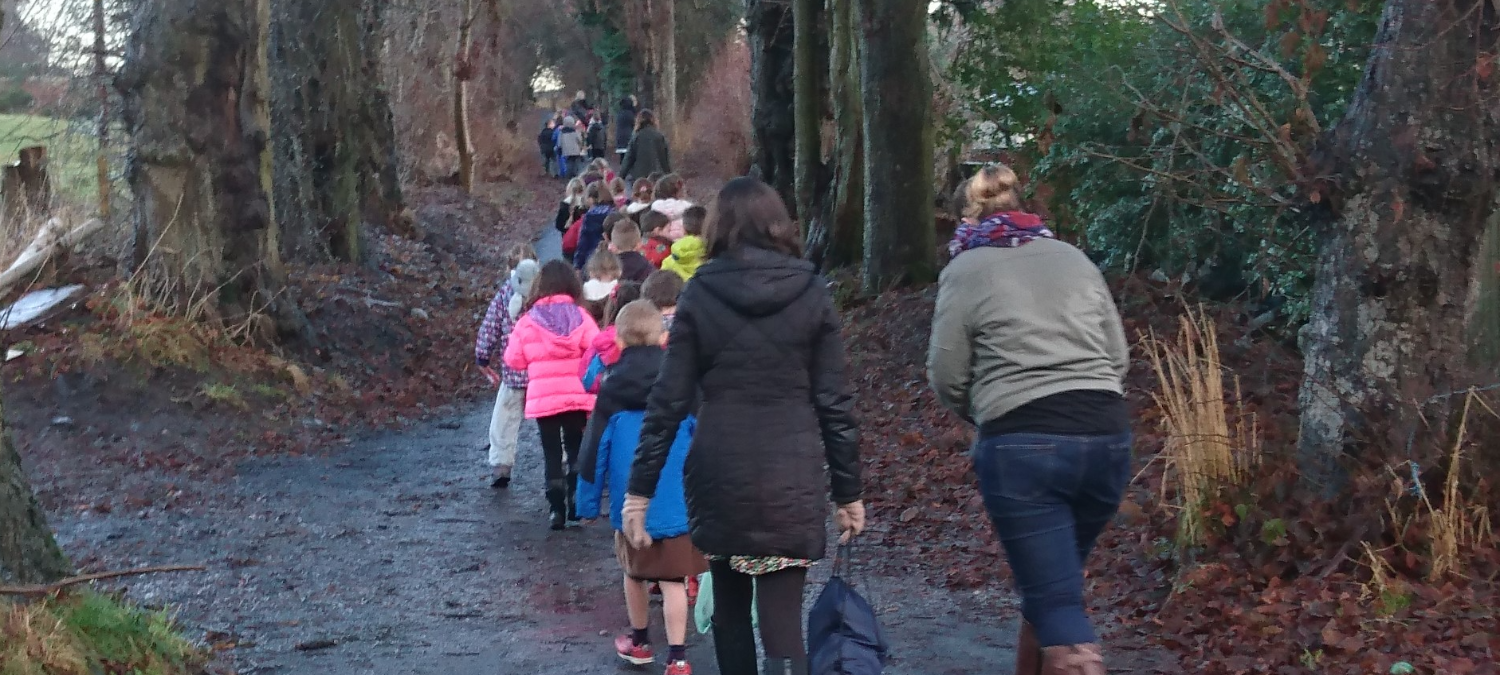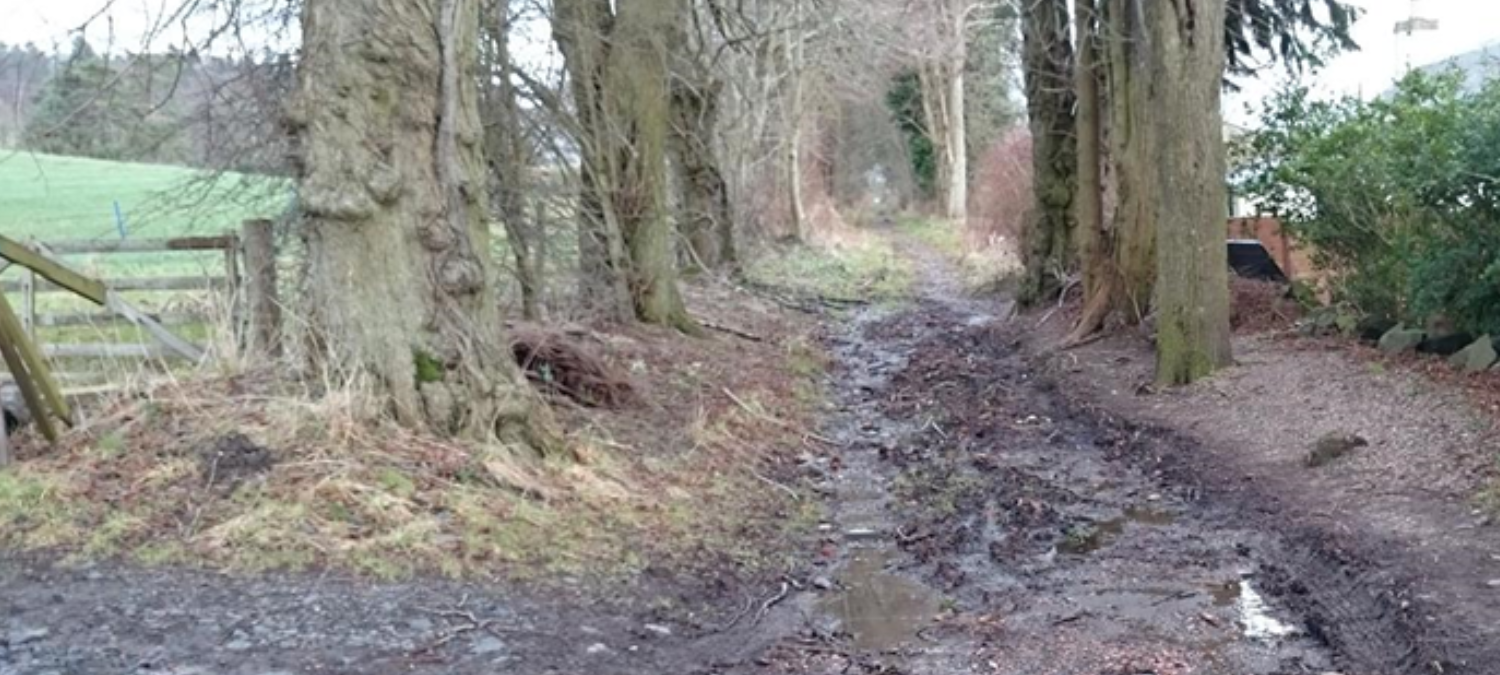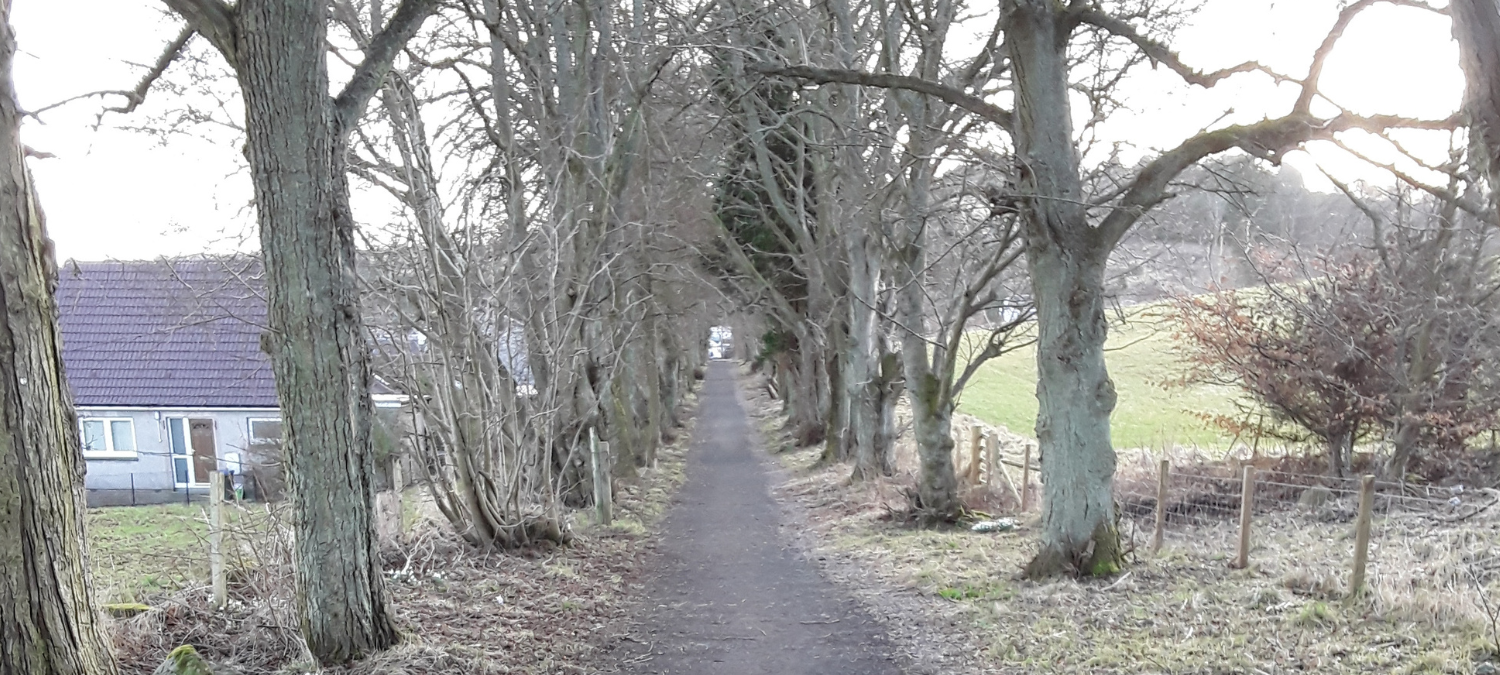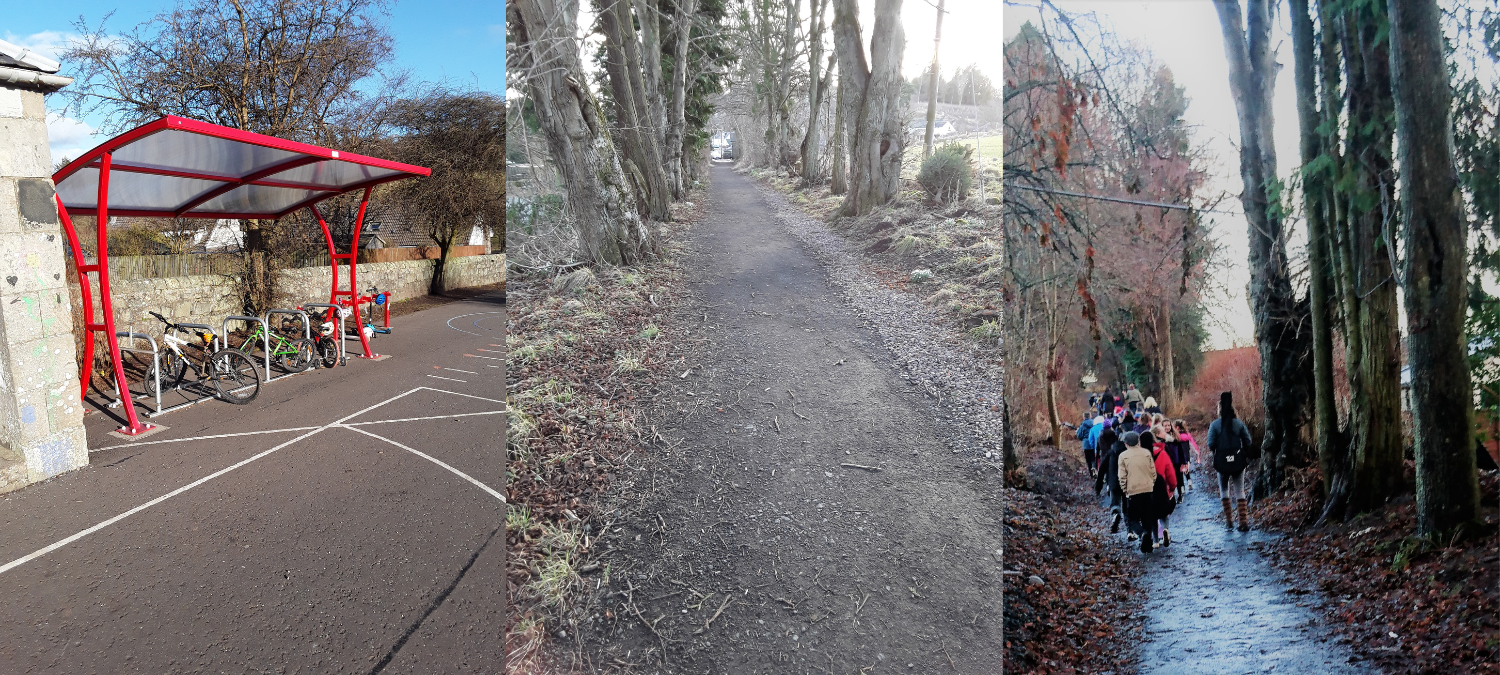
Case Study: TRACKS (The Rural Access Committee of Kinross-shire)
A small grant allied with volunteer enthusiasm has put Arngask Primary School pupils and families literally on a better path.
Glenfarg is a small village of approximately seven hundred inhabitants, located in the Ochil Hills between Kinross and Perth. Arngask Primary School is situated at the north end of the village. As a result, many pupils historically had to walk along the busy Greenbank Road to get to school.
TRACKS (The Rural Access Committee of Kinross-shire), is a registered charity that promotes greater public enjoyment of the natural, built, and cultural heritage of the Glenfarg and Kinross area. This is largely through development of access arrangements and the improvement and maintenance of a local network of paths, cycleways, and bridleways. The organisation has successfully upgraded or created a number of local paths, such as the Loch Leven Heritage Trail and a pathway from Wallace Park in Glenfarg to Duncreivie.
TRACKS and local residents wanted to provide a safe, traffic-free route to school for Glenfarg children, taking them off the busy road. In addition, everyone involved wanted to provide a safe route for residents in the north of the village to get to the shop in the centre of the village.
TRACKS undertook consultation with a number of local stakeholders to establish the need and design of the path. This included Arngask Primary School, the Parent Council, Glenfarg Community Council and the local authority, Perth & Kinross Council.
The preferred route followed an existing earth path on private land, not designated as a Core Path by the local authority. Core Paths are routes designated under the Land Reform (Scotland) Act 2003. Local authorities have rights to maintain the Core Path network, but it is not a statutory duty. Where a path is designated as a Core Path, this provides a degree of reassurance that access rights will be respected by the landowner and enforced by the access authority.
Prior to improvement, the site of the preferred path had poor drainage, meaning conditions were often not suitable for walking and contributing to potential flooding risks for adjacent properties.
The project aimed to upgrade the path to create a hard, well-drained two metre wide surface with Type 1 substrate and whin dust finish. This would enable full access by foot, bicycle, and horse. The path was designed to comply with Countryside Code access criteria, making it fully accessible to wheelchair users and pushchairs.
A grant of £2,029 was awarded from Lochelbank Wind Farm Community Fund in April 2016. This was conditional on TRACKS receiving written agreement from the landowner for the works, ongoing path maintenance and ongoing public access. The Fund Panel also decided that the contingency costs contained in the project budget, of £1,079, could also be paid if required.

Achievements and Outcomes

The project successfully upgraded the path along the avenue running from Greenbank Road to the top of Greenbank Crescent in Glenfarg and created a new tarmac path linking that directly into the grounds of the Arngask Primary School.
The total cost of the project was £27,560, with partnership funding coming from Sustrans and the SITA (SUEZ) Trust.
The path was completed within budget; contingency funds were not required.
The upgraded path
The project has directly benefited the eighty-five children at Arnask Primary School, providing an easily accessible and traffic-free route to school for the long term. In addition, it has helped the school to meet its target of pupils taking a daily walk, contributing to improvements to health, safety, and wellbeing of the pupils. Perth and Kinross Council responded to TRACKS efforts by installing a new bike shelter and stand at the school, further encouraging active travel.
Residents to the north of the village have also benefited from a traffic free route to the local shop.
The project upgraded a path which met a clear need for a safe route to school for pupils. Consultation was carried out on the route and design to ensure that the project effectively met the needs of both the school and residents. The project shows the value of safe, accessible paths in encouraging active travel and daily activity, hence promoting health and well-being. It also shows the added value that partnership working can bring, in particular through the bicycle shelter and stand provided by the local authority and matched funds for the tarmac link path to the school.

The route has been developed on a path which was not designated a Core Path. As a result, it was important to get written agreement for the works and for ongoing public access from the landowner. In planning the project, TRACKS also addressed the long term sustainability of the path by gaining the commitment of Glenfarg Path Group to carry out maintenance.
Many funders refuse to consider funding contingency costs. In agreeing to consider contingency costs, if required, the Fund Panel showed a flexibility which recognises the uncertainties that can arise in carrying out capital works of this nature.




